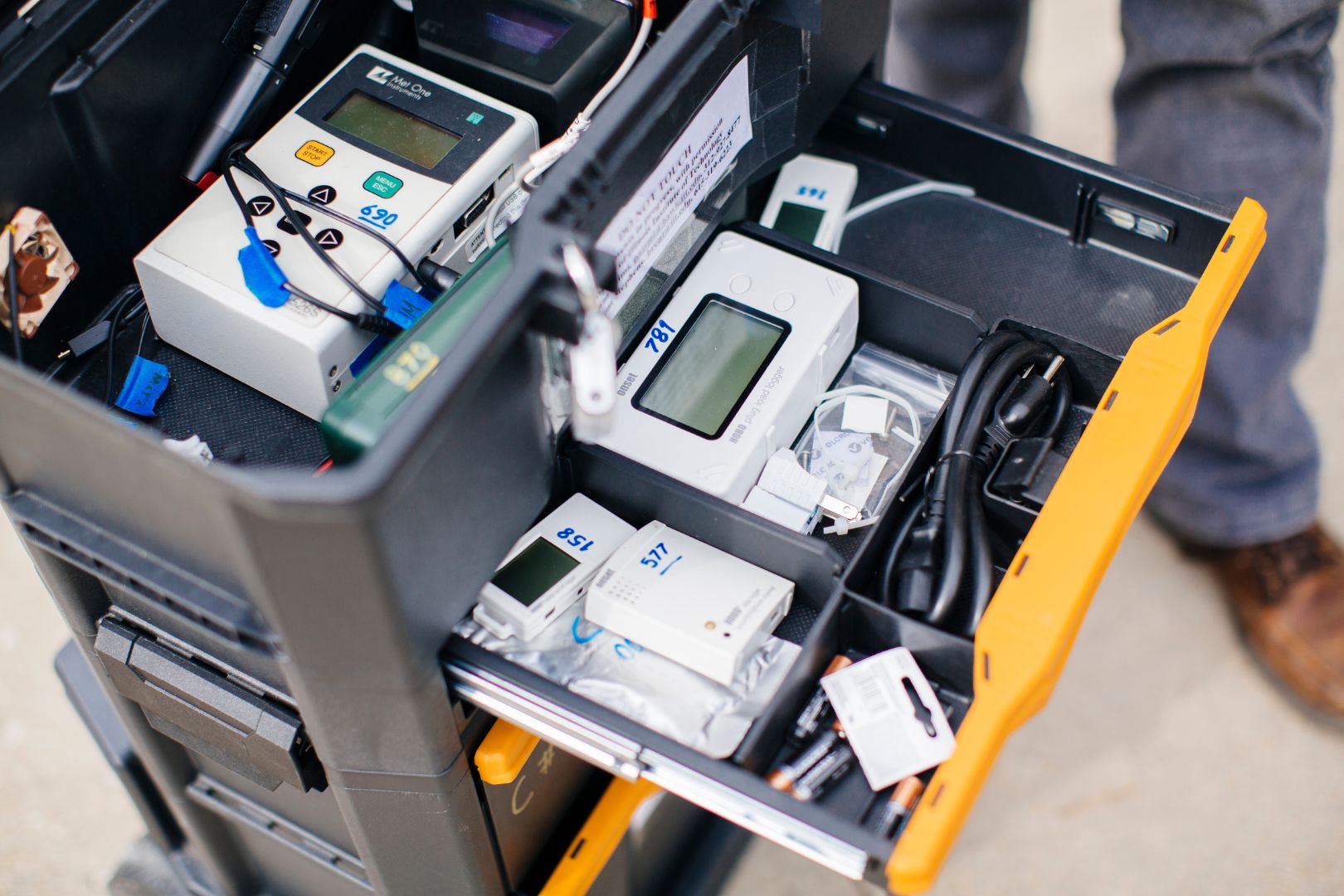Breathing room: UTA study clears the air on asthma
Thursday, Oct 30, 2025 • Brian Lopez : Contact

For millions of people living with asthma, even the air inside their homes can make breathing difficult. But researchers at The University of Texas at Arlington have shown that better ventilation systems can make a measurable difference in helping people breathe more easily.
The recently published study, coauthored by Insung Kang, assistant professor in UTA’s Department of Civil Engineering, found that improved residential ventilation systems can significantly enhance indoor air quality and reduce breathing difficulties for adults with asthma.
UTA collaborated with the Illinois Institute of Technology and Elevate, a nonprofit based in Chicago that works to ensure clean and affordable heat, cooling, power and water in homes. The three-year project, conducted in Chicago from 2017 to 2020, examined how different types of home ventilation systems affect indoor pollutants and respiratory health in adults with asthma.
“Recognizing how significantly indoor environments influence people’s health inspired me to dedicate my research to improving public health,” Dr. Kang said. “When we visited homes, we could see the difference these systems made, especially for families facing economic or environmental disparities.”
After a year of baseline monitoring, researchers installed one of three types of ventilation systems in participants’ homes: upgraded bathroom exhaust fans that run continuously to draw air in from the outside; a supply fan connected to the central heating and cooling system set that ran intermittently to push air into the home; or an energy recovery ventilator (ERV) that continuously exchanged indoor and outdoor air. The supply and balanced systems circulated and filtered air, while the ERVs also conserved heating and cooling energy.

Related: UTA study targets hidden air hazards in homes
The findings, published in the journal Building and Environment, showed that all three systems led to measurable improvements in indoor air quality and asthma outcomes during the study’s second year, when ventilation was activated. The ERV system produced to the greatest improvements in asthma symptoms. Older adults—those over 45— experienced pronounced benefits.
“This work would not have been possible without funding from the U.S. Department of Housing and Urban Development; the time and energy of our colleagues, contractors, and recruitment teams; donations from several manufacturers; and, of course, our study participants,” said principal investigator Brent Stephens of Illinois Tech. “Each participant welcomed us into their homes for air quality monitoring, allowed contractors to install ventilation systems and completed dozens of surveys throughout the project.”
Anne Evens, Elevate CEO, said the research confirms that improved ventilation isn’t simply a building upgrade, but rather a public health solution.
“We’re honored to collaborate with The University of Texas at Arlington and Illinois Tech on this groundbreaking study,” Evens said “Together, we’re demonstrating how evidence-based housing interventions can reduce health disparities and help families breathe easier."
Kang completed the project as part of his doctoral research, an experience that shaped his career focus on environmental health and equitable technology design. Now leading the Built Environment and Health (BEH) research group at UTA, he continues to explore ways to make buildings healthier and more energy efficient across Texas and beyond.
He is currently conducting a similar study in urban homes across Dallas-Fort Worth.
About The University of Texas at Arlington (UTA)
Celebrating its 130th anniversary in 2025, The University of Texas at Arlington is a growing public research university in the heart of the thriving Dallas-Fort Worth metroplex. With a student body of over 42,700, UTA is the second-largest institution in the University of Texas System, offering more than 180 undergraduate and graduate degree programs. Recognized as a Carnegie R-1 university, UTA stands among the nation’s top 5% of institutions for research activity. UTA and its 280,000 alumni generate an annual economic impact of $28.8 billion for the state. The University has received the Innovation and Economic Prosperity designation from the Association of Public and Land Grant Universities and has earned recognition for its focus on student access and success, considered key drivers to economic growth and social progress for North Texas and beyond.
Latest News
- UTA expands brain health researchStudy shows how guided cognitive training may improve brain performance
- UTA’s WERC sets the standard for water researchUTA engineers lead efforts to control flooding and protect Texas communities for decades to come
- Why old Victorian houses give us the creepsUTA architecture expert Marisa Gomez explores why these ornate homes became the stuff of Halloween nightmares
- Do more with less strain: UTA’s robotic armSoft, air-powered exoskeleton eases muscle fatigue, reduces injuries and boosts workplace safety
- Bitter, sweet and steeped in historyUTA expert shares the story behind the treat, from 16th-century Mexico to chocolate houses in Europe
- UTA study: Just a little movement can lift your moodSwapping just 30 minutes of sitting for light activity boosts energy and mood the next day






